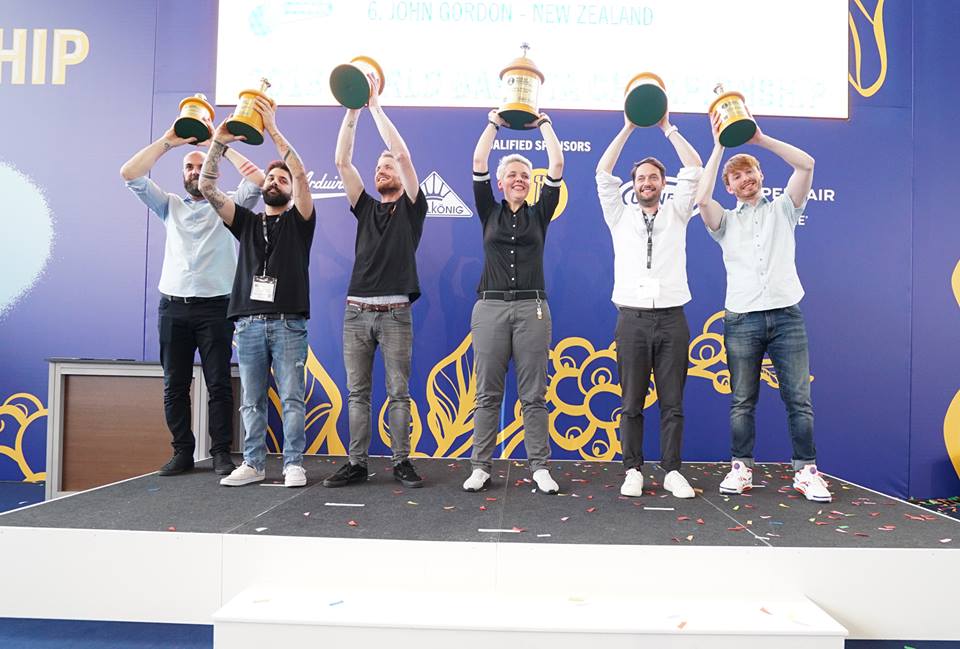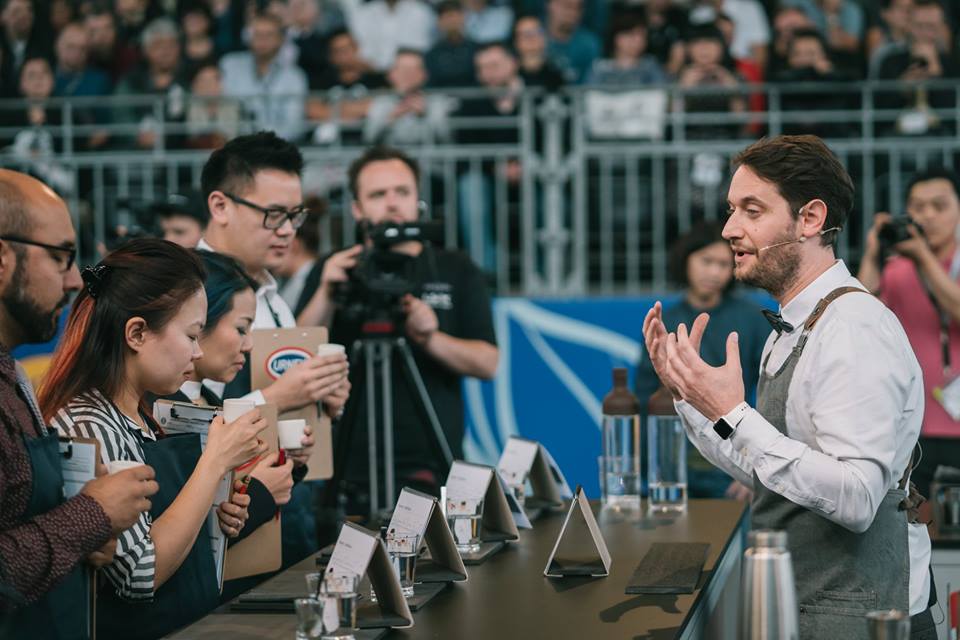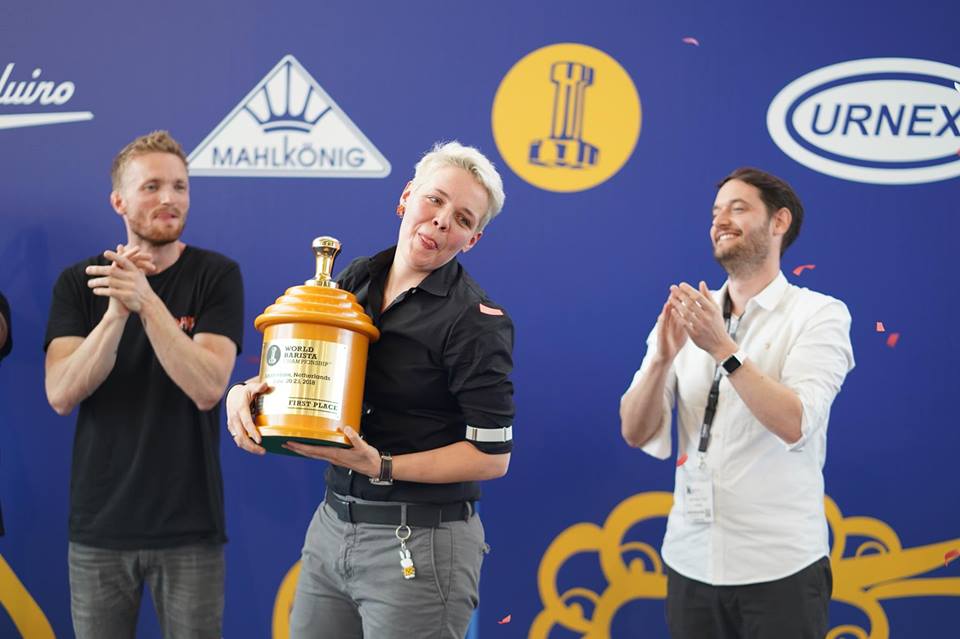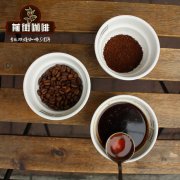The secret of winning the 2018WBC World Barista Championship! The final contestants are introduced with beans!

Professional coffee knowledge exchange more coffee bean information please follow the coffee workshop (Wechat official account cafe_style)
The 2018 World Barista Competition will soon come to an end. First of all, congratulations to Agnieszka Rojewska from 🇵🇱, Poland, on winning the championship and the first female barista in history. I'm really excited! (of course I mean her -) not to say that everyone may not know, it turns out that she is also the winner of this year's London coffee master and this year's Polish flower champion!
Coffee Champion Info:
Beans: Ethiopia Guji Masina Village
Processing: Carbonic Maceration
Espresso Flavor: Peach, Orange, Plum
Milk Coffee Flavor: Milk chocolate, strawberry jam, like a chocolate ice cream melting your mouth.
Champion (third from right); Agnieszka Rojewska (Polish 🇵🇱)
Second Runner-up (third from left): Lex Wenneker (Netherlands)
Lan 🇳🇱)
Second Runner-up (second from right): Mathieu Theis (🇨🇭, Switzerland)
Fourth (second from left): Michalis Katsiavos (🇬🇷, Greece)
Fifth (first from right): Cole Torode (🇨🇦, Canada)
No. 6 (first from left): John Gordon (🇳🇿, New Zealand)
Photo source: World Barista Championship official website.
Next, let the editor take a look at what magical beans have been chosen by the finalists to achieve good results.
According to the three important elements of beans [producing area], [variety] and [treatment], respectively, we can see the match beans in this final. [treatment] seems to be the focus of watching the competition this year, none of the contestants use the traditional sun or water washing treatment, and no contestants choose honey treatment, this year seems to be the year of anaerobic treatment, a total of five of the six contestants used anaerobic treatment (Anaerobic/Carbonic Maceration), which is amazing! In terms of [producing areas], there are six finalists, two from Ethiopia, two from Colombia, one from Panama and one from Costa Rica. Finally, [breed], Rosa / Geisha is still a favorite species, used by a total of three contestants, but the championship has not been won by Geisha / Geisha for two consecutive years, perhaps not as overwhelmingly strong as in the past. The other two chose Ethiopian native species this year, one chose Caturra/Catuai, and Sidra is an interesting new face this year.
Let's take a look at the beans used by this year's finalists (in the final ranking):

1. AGNIESZKA ROJEWSKA-POLAND
This year's champion used Guji's Carbonic Maceration, which is actually named by 2015 WBC champion Sasa Sestic, and it is also a kind of anaerobic treatment. This year's champion not only chose Sasa's beans, but also asked him to coach for some time. Sasa has made several batches in Gucci this year, but Sasa always keeps the parameters of each batch secret. It depends on which batch and which parameters the champion uses, depending on whether any information is revealed later. After the Shanghai exhibition cup test, I went to inquire about it, but the price of the same grade as Rose Xia is the envy of the editor. I don't know how much Sasa has done. I am laughing in my dreams tonight.
2. LEX WENNEKER-THE NETHERLANDS
A few years ago, the handsome Dutch guy came in sixth because of overtime, but he was loyal to the elegant demeanor of completing the performance at his own pace, which really made the editor very fond of it. I am very glad that Lex has made a comeback this year, only a little short of the champion! Congratulations to him.
Lex this year uses the geisha / Rosa XO treatment of Columbia's Granja La Esperanza (Blue Hills Manor) Finca Cerro Azul!

3. MATHIEU THEIS-SWITZERLAND
The Mathieu show is full of energy and interaction. He used an anaerobic fermentation 20-hour solarization treatment from Costa Rica Tarazu, a variety of Kaddura / Caturra/Catuai, 1800 meters above sea level. His Espresso from the aroma, the first mouthful, the second mouthful to the end of the rhyme, all use the flavor of cinnamon to describe, is a very prominent flavor characteristics of the beans.

4. MICHALIS KATSIAVOS-GREECE
The representative of Greece used the anaerobic fermentation treatment of Panama Finca Deborah (62 hours).

5. COLE TORODE-CANADA
The representative of Canada prepared a thick manual for the judges, and the editor wanted to see what was written in it. Cole also chose Colombian beans, geisha / Rosa and Sidra from the hero series (Hero Series) of Palm Tree and La Palma y El Tucan. Sidra is a hybrid of bourbon and Tibica, but this strain is rarely cultivated and is generally found in Ecuador, which produces very little in the whole country, and is also very rare in China.
6. JOHN GORDON-NEW ZEALAND
John Gordon can be said to be a veteran, the performance is very smooth, the explanation is very clear. The editor also likes it very much, but it seems to be due to mistakes in technical details, ranking sixth. The method of anaerobic fermentation is also used in this John Gordon.
Important Notice :
前街咖啡 FrontStreet Coffee has moved to new addredd:
FrontStreet Coffee Address: 315,Donghua East Road,GuangZhou
Tel:020 38364473
- Prev

The winner of the 2018WBC World Barista Competition has been announced! The first female WBC world champion was born!
Professional coffee knowledge exchange more coffee bean information please follow the coffee workshop (Wechat official account cafe_style) 2018 World Cup barista contest winner announced! The first female barista won the World Barista Competition! 2018 World Barista Championship | the first female barista won the World Barista Competition! Champion AGNIESZKA ROJEWSKA-
- Next

Top Ten High-end Coffee Machine Brands list what's a good brand of coffee machine
Professional coffee knowledge exchange more coffee bean information Please pay attention to the coffee workshop (Wechat official account cafe_style) Coffee machine can achieve automatic coffee grinding, automatic brewing and other functions, in modern people's homes are not uncommon, it is easy to operate, quick and convenient to use, is indeed a good machine. So, what brand of coffee maker is good? Follow the Deer Leopard platform
Related
- Why are the coffee in some coffee shops not enough after being frozen? What should I make up for my American latte cappuccino coffee after being frozen?
- How much water does it take to steam coffee by hand? Why is the coffee brewing and steaming time 30 seconds? What is the purpose of steaming coffee?
- The suspected drink contains too much caffeine! Overlord Tea Lady responds urgently!
- Starbucks rejects antique paper coupons?! Netizen: Missed marketing opportunities!
- What ratio of water temperature and ground does the smart cup method use to press coffee? The difference between brewed coffee and filtered coffee?
- What is the standard process for the purpose of coffee cup testing? What is the difference between hand-brewed coffee and cup testing?
- How to use hand-brewed coffee paragon small golden balls? How does cold coffee lock in the aroma of coffee?
- Is American coffee black? What is the difference between American coffee and drip coffee?
- Unexpected! Well-known tea beverage brand Lele Tea will withdraw from the Zhengzhou market!
- Starbucks enters the fashion and beauty industry?! Netizen: Give me an ice American eye cream

